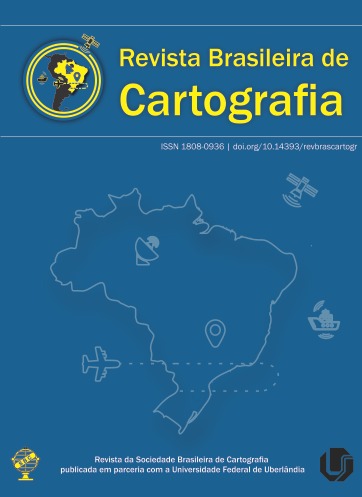Multi-Criteria Evaluation Applied to the Determination of Areas of Suitability for Real Estate Appreciation
Main Article Content
Abstract
The Geographic Information System (GIS) has been largely used in the Multipurpose Territorial Cadastre to manage data and information about properties and the various themes related to Urban Planning and Territorial Management. Among the tools present in a GIS, the Multi-Criteria Evaluation (MCE) is used in several areas of science and its results are maps of susceptibility or suitability, elaborated through the combination of restrictions, factors and weights that allow subsidizing the taking decision-making. In the context of Goiânia, MCE was used to define areas of suitability for real estate valuation. For that, geographical data of the themes were used: Environment, Topography, Transport and Mobility, Education, Historical Heritage and Culture, Health and Social Assistance, Urban Infrastructure and Urban Services. All data went through spatial analysis techniques to be scaled into factors in terms of their suitability for real estate valuation through the Boolean and Fuzzy logic. In addition, the factors were subjected to weighting processes using the Analytical Hierarchy Process (AHP) method correlated with the Generic Valuation Plan (PGV). To combine the factors of the analysis, the Weighted Linear Combination (WLC) and the Weighted Ordered Average (OWA) methods were used. The results show that the Central and Campinas Regions showed higher real estate valuation, concluding that MCE expands the ability to model the geographic influence on property values.
Downloads
Metrics
Article Details
Authors who publish in this journal agree to the following terms:
- Authors retain copyright and grant the journal right of first publication with the work simultaneously licensed under a Creative Commons Attribution License that allows others to share the work with an acknowledgment of the work's authorship and initial publication in this journal.
- Authors can enter into separate, additional contractual arrangements for the non-exclusive distribution of the journal's published version of the work (e.g., post it to an institutional repository or publish it in a book), with an acknowledgment of its initial publication in this journal.
- Authors are permitted and encouraged to post their work online (e.g., in institutional repositories or on their website) before and during the submission process, as it can lead to productive exchanges, as well as earlier and greater citation of published work (see "The Effect of Open Access").





